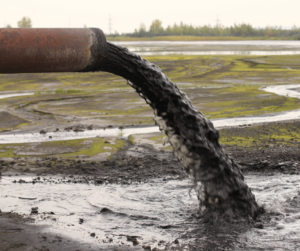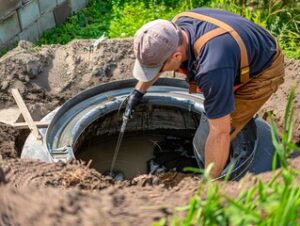Septic systems are designed to hold waste for a long time. However, if the system is overused, it will eventually need to be replaced.
Proper maintenance prevents sewage backups, ground contamination, and system failure. A septic tank that is properly pumped and inspected will function correctly. It will also reduce the risk of unpleasant odors. Visit Website to learn more.
A septic system is designed to treat wastewater from your household, but the waste can contaminate soil and groundwater over time if it doesn’t get pumped out or regularly inspected. During a septic inspection, a professional evaluates the septic tank, pipes, drain field, and other mechanical parts to determine their condition. Regular septic inspections can help prevent system failure and costly repairs.
A common warning sign that your septic tank needs to be pumped is standing water in the yard or around the septic system. This can be caused by a clogged or full septic tank or a faulty septic drainfield. If you notice this problem, contact a septic service as soon as possible.
When a septic inspector visits your home, they will begin by visually examining the property and looking for the septic tank. They will also look for red flags, like a dingy distribution box or puddling anywhere in the leach field. The inspector will also flush toilets and run faucets to check for pressure problems.
Depending on the size of your household and the age and type of your septic system, you may need to have your septic tank inspected every three years or more often. For example, homes with multiple bathrooms and garbage disposals need more frequent inspections than those without. Additionally, alternative septic systems that use sand or peat instead of soil to promote treatment may require more regular inspections.
After locating the septic tank and evaluating its condition, the inspector will open it to look for solid waste, sludge, and scum accumulations. They will also inspect the baffles, lids, risers, and other structural components. The inspector will also check the date on the septic tank and assess the sludge level to determine whether it is time to have the tank pumped.
If your septic system has a float switch, the inspector will test it to ensure that it is working properly. They will also test the septic tank pump and electrical controls. Finally, the inspector will examine the drainfield to make sure that it is free of obstructions and buried debris. After the inspection, the inspector will leave you with a detailed report and any recommendations for maintenance or repairs.
Pumping
A septic tank is a large underground container that temporarily holds household wastewater and sewage. Heavy solids settle at the bottom of the tank while lighter scum floats on top. Wastewater passes from the septic tank through a baffle into a series of perforated pipes extending into the drainfield in the soil. The septic tank is an important part of your septic system, but it must be pumped out regularly. Having your septic system pumped on a regular basis is essential to ensuring that it continues to work as intended.
A properly functioning septic system will not overflow or back up. If your septic tank or cesspool overflows, it can cause major problems and be hazardous to your family’s health. Overflowing septic systems can result in flooding of your basement and yard, backed-up sinks, toilets, and tubs, as well as foul odors. A regular septic tank pumping service will keep the solid materials from building up to the point that they clog your drain lines or spill over into the absorption field.
How often you need your septic tank pumped really depends on usage, meaning how many people live in your home and the amount of water used daily. The more people and the larger the water use, the faster your septic tank will fill up and need to be pumped.
The septic tank should be pumped when the sludge layer is within six inches of the outlet pipe or when the scum level reaches the top of the sunken sludge layer. This is typically every three to five years, depending on your household’s water usage.
If your septic tank is overflowing, call Mullin Septic online now to schedule your next septic tank pumping. Our pump truck specialists are ready 24/7, 365 days a year to help you with your septic system needs. We can also diagnose whether you’ll need a cleaning, a repair, or a new installation of your septic system. We can even clear septic laterals by using our high-pressure water jet machine. This service is fast, affordable, and will prevent future costly repairs!
Cleaning
Septic tanks and the drain field that follows them are designed to filter out disease-causing bacteria, viruses, and other chemicals from household wastewater. Untreated or improperly-treated wastewater can contaminate ground water and kill native plants, animals, and microbes that make the local ecosystem healthy.
To ensure that your septic system works properly, it’s important to keep up with routine maintenance services. These services include septic tank pumping, cleaning, and inspections. Choosing a company that offers all of these services can help you protect your property, the environment, and your health.
During a septic tank cleaning, the septic specialist uses a vacuum truck with a hose to remove waste from each compartment of your septic tank. This process is not as messy as it sounds, and the technician can often complete the entire cleaning in less than two hours. Before starting, the crew will locate your septic tank and uncover the lids. They will then use a heavy-duty hose to transfer the sludge from each compartment to a special tank truck for disposal.
The septic tank cleaning process starts with a pre-pumping inspection of the liquid levels in your septic tank. This helps the specialist determine whether your septic tank is overflowing or if there are problems with the drain field. If the septic tank is overflowing, it can be very dangerous and costly to repair.
Once the septic tank is empty, the technician will then clean it using fresh water. This helps to remove any remaining scum and solids from the walls of the septic tank, as well as clean the drain field and other components of your septic system. The cleaner will also check the drain field for signs of clogs or other problems.
While septic service is necessary, there are many things you can do to extend the life of your septic system and reduce the need for cleaning. To avoid damaging your septic system, you should not flush anything but human waste and toilet paper down the toilet. This includes baby wipes, tampons, and pads, as well as cleaning wipes and moist towelettes. You should also limit how much you use your washing machine and dishwasher, as they can create a lot of waste that will quickly fill up your tank.
Repairs
When homeowners think of plumbing maintenance, they tend to focus on their drains and pipes. However, the septic tank is also important because it manages waste in homes that are not connected to a public sewer line. Getting routine inspections, pump outs, and cleaning services can help prevent septic tank breakdowns, which can lead to sewage backups. Septic system failures can also contaminate groundwater, surface water, and yard with bacteria, viruses, and foul smells.
Septic services can include cleaning the septic tank and inspecting the drainfield to identify any issues that may require repair. The drainfield is responsible for filtering wastewater as it exits the septic tank. The septic tank and drainfield must be free of debris and vegetation to function properly. Regular septic tank cleaning can reduce the need for repairs and extend the lifespan of your septic system.
If you notice water pooling in your backyard, it could be a sign that your septic tank is full. It may also indicate that a crack or leak is present. A leaking or cracked septic tank can cause water to leak into the drain field and contaminate your yard, house, and driveway.
A septic system has multiple parts that can break down over time, including the septic tank itself and pipes that connect to it. The septic tank can crack or leak due to a lack of maintenance and age, or it can be damaged by extreme weather conditions.
Pipes that connect to the septic tank and leach field can be damaged by heavy vehicles or machinery, landscaping services digging up flower beds, or contractors installing a swing set or television cable. Tree roots can also damage septic system pipes, requiring them to be replaced.
Repairs are often more costly than replacement because they involve breaking up concrete slabs in order to access pipes buried underground. However, repairs are still important because they can extend the life of your septic system and help prevent expensive breakdowns. To avoid costly repairs, you should perform regular septic system maintenance like repairing dripping faucets and toilets, replacing worn out septic tank baffles, and diverting roof drains and surface water away from the septic system.


